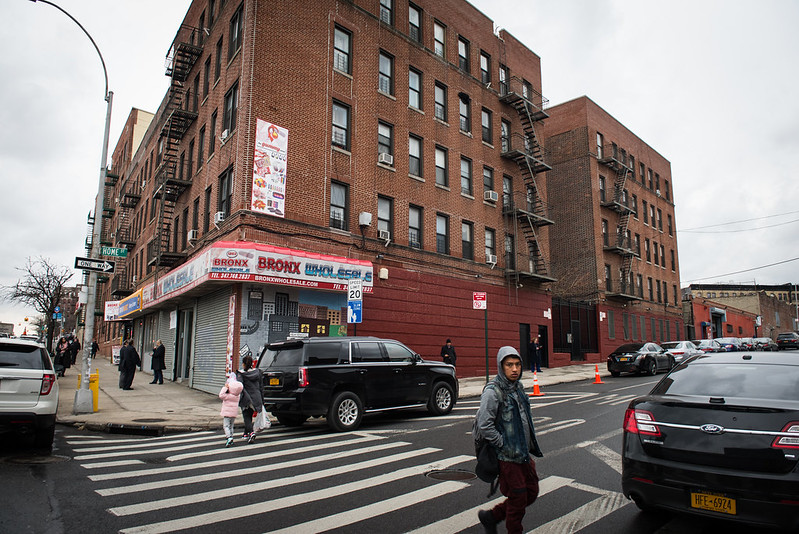
Housing on the agenda (photo: Edwin J. Torres/Mayoral Photography Office)
New York City needs a lot more affordable housing, but we also must take care of our existing housing stock. Rent-stabilized buildings provide affordable housing for more than 1 million residents in the city, but those buildings are facing dire circumstances.
For many of these buildings, especially older buildings outside of the Manhattan core, they rely on a single source of income to operate: rent. Those rents are set by the Rent Guidelines Board.
So when the Rent Guidelines Board (RGB) sets adjustments well below increases in operating costs, as it has in many recent years, it is defunding the buildings. Defunded buildings have to defer maintenance and can’t make necessary upgrades. Housing providers typically have to cut back on staffing, so response times to renters’ complaints increase. Over the past few years, violations for rent-stabilized buildings have increased, which is a completely predictable outcome. Tenants’ quality of life is severely diminished when the RGB does not allow reasonable rent adjustments.
Housing providers rely on the RGB to ensure they can cover operating costs, debt service and capital improvements. But they have been disappointed for more than a decade when the RGB has continuously undercut their ability to keep buildings solvent and in good shape for their tenants. And especially since the passage of the 2019 adjustment to state rent laws, known as HSTPA, which eliminated other available tools that allowed for building improvements.
In this scenario, everyone loses.
This year, the RGB’s data suggested rent-stabilized buildings need an 8.25% increase on a one-year lease and a 16% increase on a two-year lease in order to keep up with rising costs after accounting for inflation. What this really means is that these buildings need rents to increase that much in order to prevent the future deterioration of apartment buildings.
A Special Memo from the RGB details the systemic defunding of rent-stabilized buildings. Net Operating Income (NOI – the amount left over after costs, primarily used for debt service and capital expenditures) declined for highly stabilized buildings (80% or more of units rent stabilized) outside of core Manhattan by 2.5% in 2020 and 3.9% in 2021.
Despite knowing this, the RGB voted on a preliminary range for rent adjustments of 2% to 5% for one-year leases and 4% to 7% for two-year leases. This is well below the rate of inflation (6.2%), much less the operating costs of these buildings. This also leaves no money for responsible debt service and any capital improvements.
These troublesome trends will continue as the RGB continues to set rent adjustments lower than operating costs and inflation, which will ultimately lead to the deterioration of the largest source of affordable housing in New York City, which took decades to restore after the harmful impacts of poor housing policies in the 1970s and 1980s. These are the same policies that have returned under the HSTPA.
There has been an outcry about the potential sharp increase in rents, and we understand that there is an affordability crisis in the city. The answer to this is not to continue to defund buildings during a housing crisis and further diminish a severely needed resource.
If the government wants to help renters, policy-makers need to help reduce operating costs for property owners, not continue to raise their property taxes. They also need to help support renters struggling to pay rent, which is why the Community Housing Improvement Program (CHIP) supports measures like the Housing Voucher Access Program (HVAP).
Unfortunately, elected officials have failed to do anything to create more affordable housing or preserve the existing affordable rent-stabilized housing stock. Like previous years, they have done nothing and are now focusing all of their efforts into pressuring the Rent Guidelines Board to cover up for their lack of progress. Instead, elected officials should take a look at why insurance rates are so high, pass a statewide insurance program for affordable housing, and fix the broken property tax system, among other measures like HVAP. All of these efforts would help tenants stay in their affordable, well-maintained homes.
The RGB should stop bailing out do-nothing elected officials. The way they do that is to follow the data and stop defunding the very buildings they are tasked with preserving. Hopefully, that will send a message to elected officials that they need to take more responsibility to solve this problem instead of always blaming someone else.
New York City needs affordable housing. So let’s stop destroying what we already have.
***
Jay Martin is the Executive Director of the Community Housing Improvement Program. On Twitter @JayMartin222 & @NYC_CHIP.
***
Have an op-ed idea or submission for Gotham Gazette? Email This email address is being protected from spambots. You need JavaScript enabled to view it.